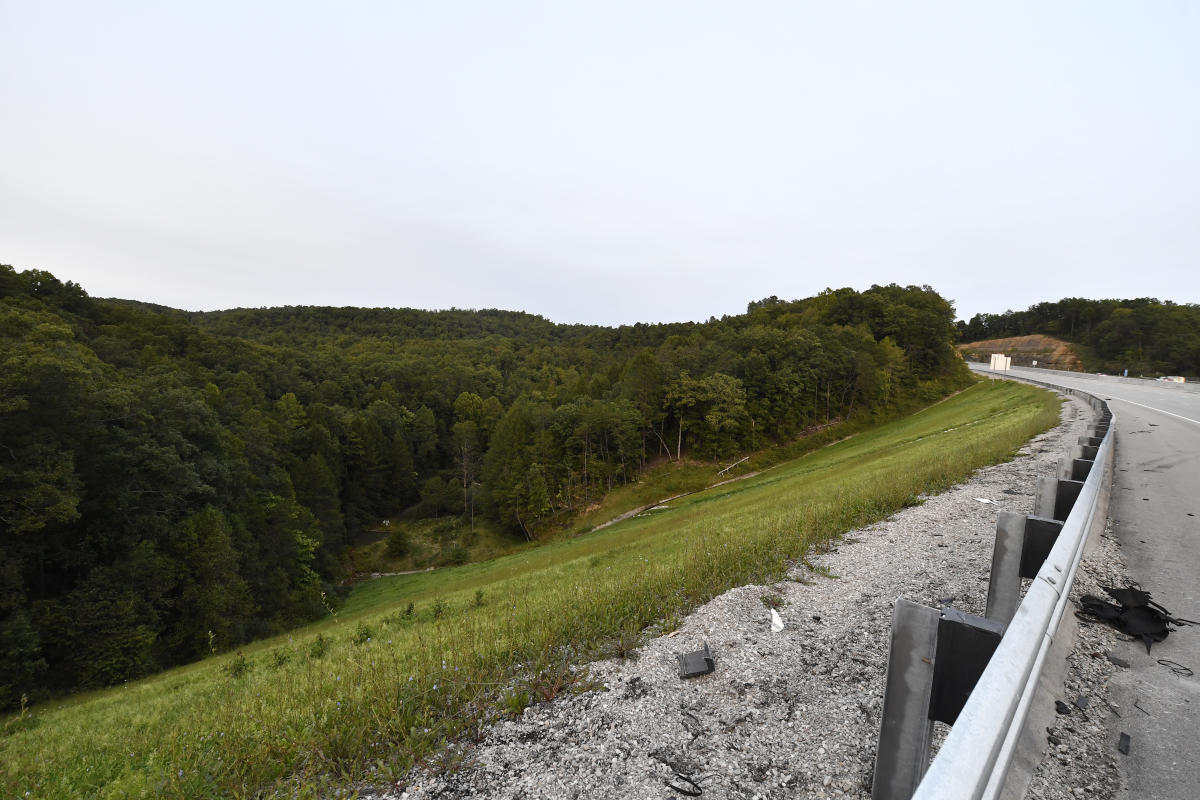I’d never been to Makgabeng, but over the years, had heard rumours of its magnificence. Groups of environmentalists had visited and returned in awe of its unique geology. A botanist from the University of the North had apparently discovered a new plant species there. I was told that a farmer from Magoebaskloof had climbed Makgabeng barefoot and seen rock art that had blown his mind.
Cynically, it was only when I heard that the area was under threat from platinum mining that I decided it was time to explore.
I left Polokwane on the R521 to Alldays, following big trucks bound for the Botswana border that pulled over now and again to buy Congo Dust from roadside sellers, a traditional herbal mix that’s basically truckers’ speed and a sexual stimulant. I crossed the Tropic of Capricorn and turned off to the town of Bochum, Senwabarwana, as it’s also known, and continued through a series of sparse rural villages.
Read more: Sophiatown’s small museum houses history of big import
I arrived at Makgabeng Farm Lodge in time for a glorious sunset over the distant shoulder of Makgabeng plateau.
The next morning, I met local guide Jonas Tlouamma, and we set out for the day, taking a dirt road shortcut that came out at a T-junction signposted left to My Darling village.
Makgabeng is part of Capricorn district, Blouberg municipality, southwest of the mountains of the same name, an area that was historically settled by Germans. There were no forced removals here, and I saw active smallholder farms with a few boreholes, windmills and solar, but little development.

Makgabeng’s sandstone formations with lichen-clad rock. (Photo: Bridget Hilton-Barber)
We passed goats, cows, euphorbia, marula, kudu-berry and black monkey orange trees. As we climbed up into the semi-arid slopes, Jonas told me he grew up in this area and still lives here. He knows all the caves and rock art, the canyons, the kloofs and cliffs. He worked for about five years alongside rock art specialist Ed Eastwood to identify and record more than 800 rock art sites here, recorded in the book Capturing the Spoor: An exploration of the rock of the northernmost South Africa.
Jonas explained that he’d been working alongside the South African Heritage Resources Agency since 2014; the aim was to get Makgabeng assigned national and world heritage site status but the process had been derailed by the pandemic and unforeseen circumstances. And yes indeed, he sighed, a rich seam of platinum had been discovered here and mining has been authorised on nine farms.
Geological surrealists
The road got rougher as we headed for Makgabeng. There were no fences or gates, and as we drove on to the plateau, ahead of us, dreamlike, rose a sandstone peak called Thabana Nhlana.
It felt like the geological surrealists had come to town. Rushes of golden grass sprang from cracks in ancient rocks. A fluorescent green boulder shone rebelliously in the sun. Behind us loomed a craggy mountain formation resembling a primaeval beast.
This mind-blowing landscape was formed by an ancient river, explained Jonas, when Makgabeng was a desert. They are the only preserved aeolian (windblown) rocks in the country and they contain more than 800 rock paintings made by the San, Khoi and Northern Sotho people who once lived here.

Rock art at the Great Train site. (Photo: Bridget Hilton-Barber)
I felt like I had entered a sacred space, and Jonas allowed me a moment of reverence. It was the same weak-kneed, soft-in-the-solar-plexus feeling that I got when I visited Zimbabwe’s Great Zimbabwe World Heritage Site, our own Mapungubwe World Heritage Site, and Thulamela in northern Kruger, all unique cultural spaces of pre-colonial splendour.
I was in the presence of the ancients.
“We used to visit these sites when we were very young, herding our goats and cattle up here,” said Jonas as we walked to the first rock art site. Protected by an overhang was an exquisitely delicate record dating back about 20,000 years – the remnant of a San painting of hunters with bows and arrows, and kudus.
Shamanic ritual
The next site we inspected, in another overhang further on, depicted a shamanic ritual in which a shaman is transformed into a human with animal heads, their faces upturned towards a string of light coming down from the sky. The supernatural was central to San life, said Jonas, and again I was struck by the profundity of this ancient record.
We drove further, crashed through the winter bush and up a scraggly path to the Great Train site, one of the most remarkable rock art sites at Makgabeng, where there are paintings made by the San, the Khoi and the Northern Sotho people, from three different times in history.
“There must have been cultural interaction,” said Jonas.
The Great Train site panels tell the story of the Hananwa people, led by Chief Malebogo, and their resistance to a hut tax and land dispossession by the government of Paul Kruger in the 1890s, which resulted in the Malebogo War of 1894.

Wind-blown stone at Makgabeng. (Photo: Bridget Hilton-Barber)
“This Great Train site is probably the first example of protest art,” said Jonas, “and it keeps our history alive. We are extremely proud of it.”
The train is a powerful symbol of disempowerment, said Jonas, a monster that ate people and deposited them in the mines in faraway Johannesburg. South African Republic (ZAR) troops and soldiers are depicted bearing aggressive postures, hands on hips, or on horseback with rifles. They have an unmistakably comical element.
The Hananwa people retreated to Makgabeng after a long struggle against – and ultimate defeat by – Boer commandos led by commandant-general Piet Joubert in 1894. After much fighting and many dead on both sides, Chief Malebogo could not bear to see his people suffering and surrendered. The most poignant panel depicts Malebogo being taken to Pretoria Central Prison, his land and possessions annexed. There’s a replica of the Great Train site at the Origins Centre at Wits University.
Read more: A gran old time — soccer gogos of Limpopo are alive and kicking and scoring
We spent time under the eaves, our backs against cool rocks, gazing at these undisturbed paintings.
“Imagine what blasting from a mine would do to these paintings,” Jonas said. I shuddered to think.
We clambered back to the vehicle and spent the next few hours exploring the magnificent Makgabeng. We walked to the edge of a canyon, with its dizzying views and patterned rocks that date 1.8 billion years and contain records of microbial mats, also known as stromatolites, some of the earliest forms of life on earth. We walked to a large rock arch through which I photographed Makgabeng, and it felt like I was gazing into its very soul.
We visited the campsite – wild and gorgeous – and Jonas told me there are four Iron Age sites at Makgabeng, and that it is home to two near-endemic reptiles, the Makgabeng dwarf gecko and the Orange-throated flat lizard. Botanists have also found two endemic plant species here – Streptocarpus makgabensis and Barleria makgabensis. There may well be others.
We drove back, hours later, and I felt both elated and subdued. I’d seen extraordinary rock art, the likes of which I’d never previously witnessed, yet the sites at Makgabeng had not been dignified.
Has Makgabeng missed being selected for protection? Will it disappear at the hands of multinational mining? Will it end in cultural death, with future generations denied their own history and the chance to showcase it? DM
For specialist guided tours and information about staying at Makgabeng; call Jonas Tlouamma on 078 954 4435. Check out Makgabeng Farm Lodge, which offers accommodation and catering for groups.
Bridget Hilton-Barber is a freelancer and photographer.
![]()



 1 month ago
86
1 month ago
86












